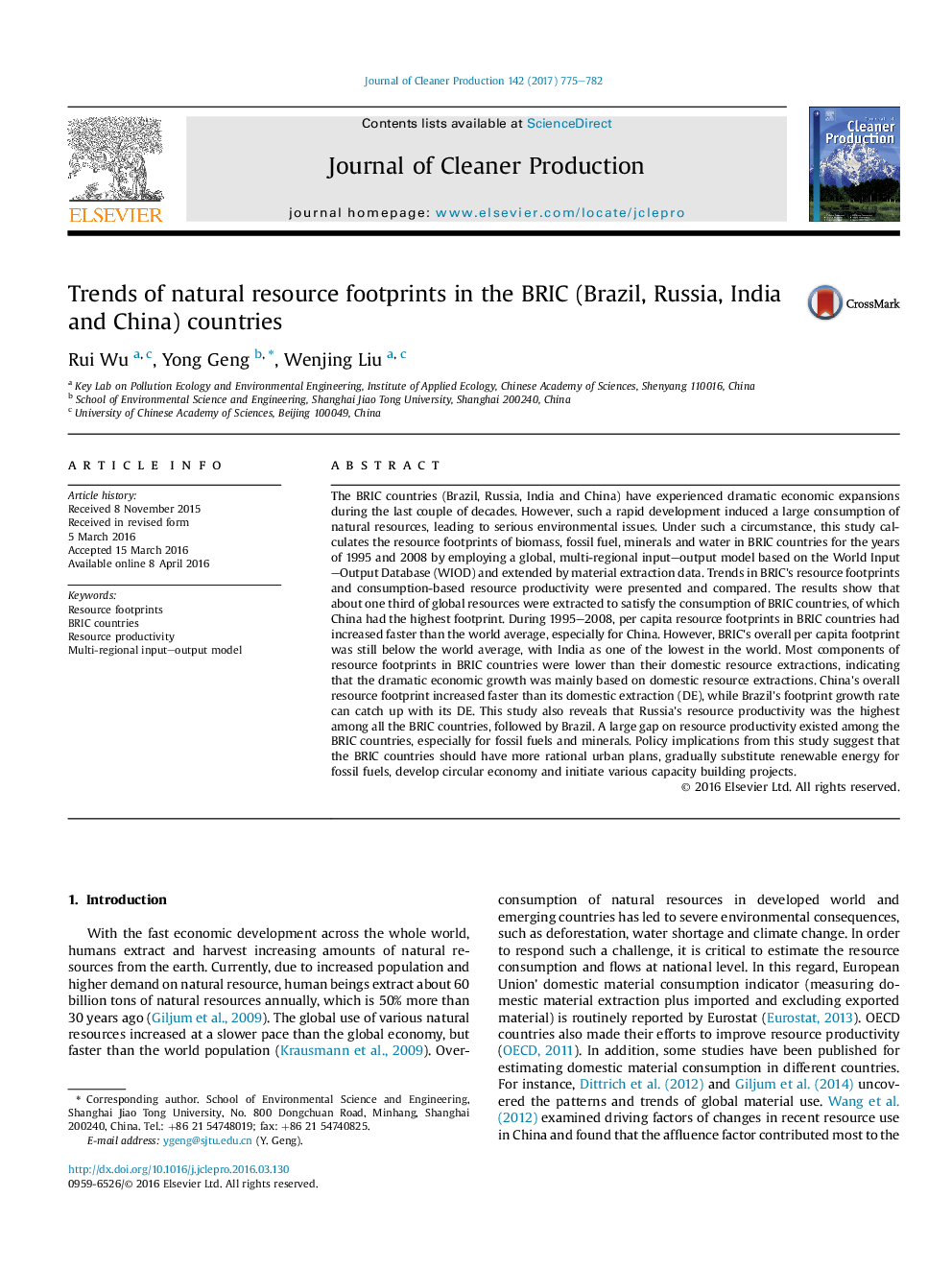| کد مقاله | کد نشریه | سال انتشار | مقاله انگلیسی | نسخه تمام متن |
|---|---|---|---|---|
| 5481237 | 1399330 | 2017 | 8 صفحه PDF | دانلود رایگان |

The BRIC countries (Brazil, Russia, India and China) have experienced dramatic economic expansions during the last couple of decades. However, such a rapid development induced a large consumption of natural resources, leading to serious environmental issues. Under such a circumstance, this study calculates the resource footprints of biomass, fossil fuel, minerals and water in BRIC countries for the years of 1995 and 2008 by employing a global, multi-regional input-output model based on the World Input-Output Database (WIOD) and extended by material extraction data. Trends in BRIC's resource footprints and consumption-based resource productivity were presented and compared. The results show that about one third of global resources were extracted to satisfy the consumption of BRIC countries, of which China had the highest footprint. During 1995-2008, per capita resource footprints in BRIC countries had increased faster than the world average, especially for China. However, BRIC's overall per capita footprint was still below the world average, with India as one of the lowest in the world. Most components of resource footprints in BRIC countries were lower than their domestic resource extractions, indicating that the dramatic economic growth was mainly based on domestic resource extractions. China's overall resource footprint increased faster than its domestic extraction (DE), while Brazil's footprint growth rate can catch up with its DE. This study also reveals that Russia's resource productivity was the highest among all the BRIC countries, followed by Brazil. A large gap on resource productivity existed among the BRIC countries, especially for fossil fuels and minerals. Policy implications from this study suggest that the BRIC countries should have more rational urban plans, gradually substitute renewable energy for fossil fuels, develop circular economy and initiate various capacity building projects.
Journal: Journal of Cleaner Production - Volume 142, Part 2, 20 January 2017, Pages 775-782